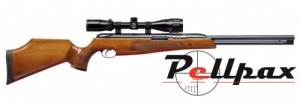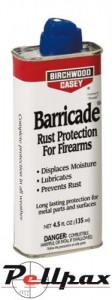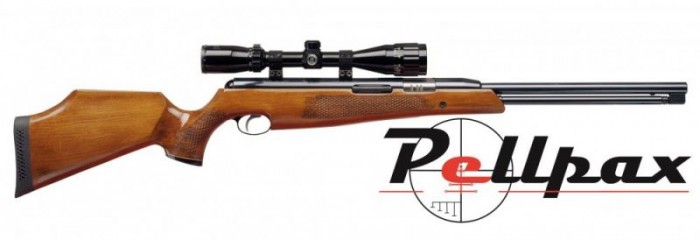It’s important to take care of your air pistol or air rifle, in order to ensure that you get the most out of it.
An airgun is a precision instrument – a complex piece of machinery. Rough treatment will cause irreparable problems, shortening the active life of an airgun that should, in the best of circumstances, last for many decades.

When transporting an airgun, ensure that it is settled securely in your vehicle, protected from bumps, falls, and collisions with other objects. Parts of the airgun’s mechanism can be knocked out of alignment, and there are some parts, perfectly adequate for normal use, that will break under stress.
Cocking a break barrel airgun can take quite a lot of force, especially in modern models such as the Gamo Hunter 440 .22 and Hammerli .22, whose powerful locking mechanisms are built to contain intense pressure in the firing cylinder. But once the pellet is loaded, do not slam the barrel closed. If the locking mechanism is damaged, the barrel will be nudged out of position, and accuracy compromised.
When cocking an underlever airgun, like the Air Arms TX200, the lever must be pulled back as far as it will go, and only at the final stage will the safety button engage. If you stop pulling too soon, and attempt to close the lever, it will seem as if the lever is stuck. It is important not to force the lever back to the closed position, but to continue pulling the lever back into the cocked position.
It is advisable to wipe the bore of your airgun, after use, with a dry cotton flannel patch. This serves to remove particles of lead or any moisture. Never use solvents in the bore, because there is a danger of it getting into the valves and damaging the plastic or rubber materials of the valve seats.

External metal surfaces should be treated with a thin film of Birchwood Casey Rust Protection, and wooden surfaces with a smear of oil.
When changing the cylinder on your CO2 gun, never over tighten the cylinders, for this can damage the threads. Brush dirt from the threads with a toothbrush and apply a very little synthetic grease to the threads every 20-30 times that you change the cylinder.
Lubrication is important. A dab of Crosman Pellgun Oil on the end of each new CO2 cylinder is sufficient to lubricate the seals that engage the neck of the cylinder. But beware of over lubricating – the gun’s mechanism can be clogged up and damaged by excessive grease.
Airguns seldom need dismantling for cleaning. They burn no powder and therefore produce no residue. They fire clean lead bullets at comparatively low velocity, and so only in the more powerful of airguns is there ever any metal fouling. An airgun can be fired tens of thousands of times between cleanings. If your airgun is being used infrequently, it won’t need a check and thorough clean more than once in six years. Those who shoot on a daily basis, however, should have their guns checked and cleaned annually.
First vital point in caring for your airgun: read the owner’s manual and follow the guidelines.
Second vital point in caring for your airgun: if a lever or button isn’t moving as easily as it should, don’t be tempted to force it. Find out what is preventing normal operation and fix that problem.
To check out our wide and growing range of Airguns, head over to the Pellpax Store.

